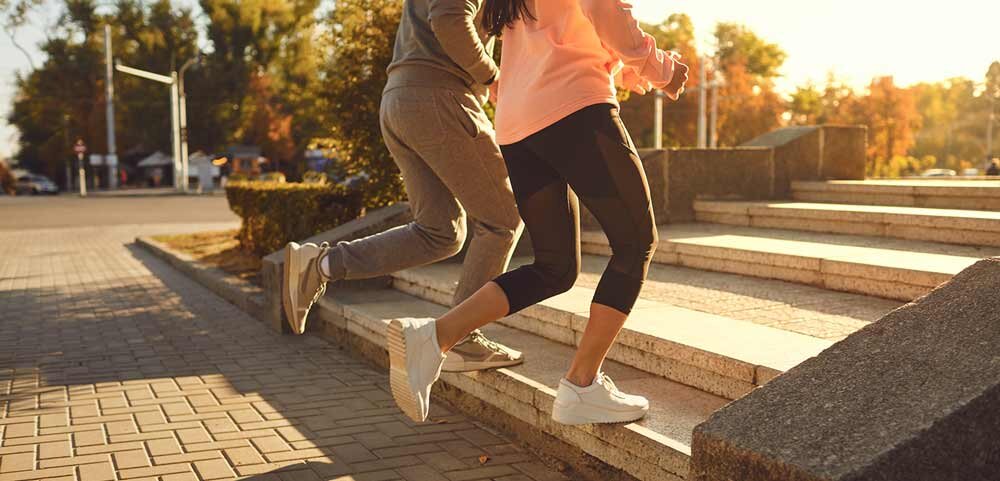How to Relieve Leg Pain
Leg pain can result from many causes including overuse, injuries in joints, bones or muscles, and issues in the lower spine. Leg pain can also become more pronounced due to serious medical conditions such as blood clots, varicose veins or deep vein thrombosis.
Types of Leg Pain
1. Muscle Cramps
Muscle cramps, also known as a "Charley Horse," can be painful enough to wake one up in the middle of the night. The sudden tight, intense lower leg pain can occur if your muscles are overused or dehydrated. If you have frequent muscle cramps that affect your lifestyle, it could be a sign or an early symptom of vein disease. It's always best to consult a vein doctor to receive a professional diagnosis of any underlying issues that may be causing the muscle cramps.
2. Thigh Pain
People who have to carry a heavy belt, such as construction workers or police officers often experience thigh pain. The weight of the belt puts pressure on the nerve around the hip and transforms into pain down the entire thigh.
3. Achilles Tendon
One of the first warning signs is a pain in the lower calf, above the bones that make up your heel. Women wearing high heels or athletes overusing their tendons often deal with Achilles tendon pain. You can also get it from overworking the calf muscles or from climbing the stairs. Your tendon may swell, stretch or tear.
When you notice this type of pain, it's important to ice your heel and rest your legs. If you continue to push your muscles to work, you might have to go through surgery in the future.
4. Shin Splints
Shin splints often appear right up the front of your calf. You will feel pain when you walk, run, or jump, especially on hard surfaces. If you have flat feet or your feet turn outward, you have more chances of getting shin splints.
5. Knee Pain
Knee pain can develop if you kneel often, especially on hard surfaces regularly. It can also be due to bursitis. Bursitis appears as swollen or red knee joint. You might feel the pain in your knees as you move your knee joints or when you press on your knee.
How To Reduce Leg Pain
Our vein doctors have great tips to relieve leg pains and monitor/maintain your leg health.
1. Resting Your Legs
Avoid overusing your legs. Make sure to rest so your legs can feel better. You can apply ice to the sore areas to relieve the pain. Elevating your legs at the end of the day can also help improve leg circulation. It might also help to stretch or massage the tense areas. You can massage your feet in warm water using Epsom salt.
2. Wearing Comfortable Clothes and Shoes
Tight pants can hinder blood flow. It worsens the pain, especially when you remain in the same position for a long time. Wearing high heels also puts pressure on your feet and isn't good for blood circulation. People who wear high heels for a long time might develop vein disease at some point.
Our vein specialists recommend wearing compression socks during the day and taking them off before sleeping. Compression stockings are a conservative therapy that can support leg circulation and help avoid the development of varicose veins and spider veins.
3. Drinking More Water
Water accounts for up to 70% of your body. Dehydration can cause leg cramps. It's important to drink enough water daily and avoid waiting till you're thirsty or dehydrated to drink water. When you go for a long ride or flight, reduce the consumption of dehydrating drinks such as alcohol or soda.
4. Maintaining a Healthy Weight Range
Being overweight can put additional pressure on your legs, which causes leg pain and leg aching. Consult your primary doctor or a vein specialist to determine your healthy weight and how to lose weight.
5. Avoid Leading a Sedentary Lifestyle
Being inactive is one common cause of leg pain. If you have to sit or stand for long hours because of the nature of your job, try to flex your feet or ankles every now and then. Doing low-intensive exercises such as walking, jogging, swimming or yoga can also maintain leg health and relieve leg pain.
6. Stop Smoking
Smoking prevents proper blood flow and can cause long-term damage to arteries and the development of blood clots.
Find a Vein Clinic Near Me
Leg pain can have multiple causes including medical issues, varicose veins, blood clots and deep vein thrombosis. Leg pain can go together with leg swelling, leg aching, leg cramps, etc., making your life difficult. It’s important to receive medical advice from a board-certified vein specialist to diagnose underlying causes. At Physicians Vein Clinics, we have 10 convenient vein clinics across South Dakota, Iowa, and Minnesota with board-certified vein specialists.
Book a free vein screening with one of our vein doctors today.





